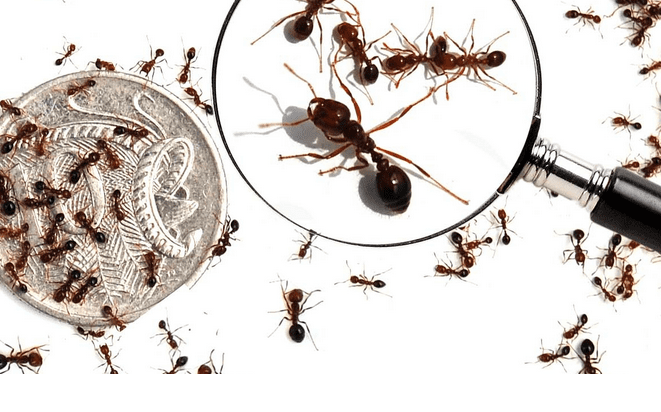
Concerns about the impact of red imported fire ants on broadacre cropping have been voiced to a Federal Government inquiry. Image: NSW Department of Primary Industries
GRAIN Producers Australia has called for more research into the potential impacts of red imported fire ants as the pest threatens to spread to broadacre regions.
Last year, the discovery of RIFA at Murwillumbah in New South Wales and detections at Toowoomba in southern Queensland increased the concerns of the grains industry that major growing regions could become infested with the pest.
A further detection in January at Wardell in NSW further added to the biosecurity risk for the grains industry.
GPA chief executive Colin Bettles put forward the case for more research at a recent public hearing held as part of a Federal Government Rural and Regional Affairs and Transport References Committee inquiry into RIFA.
In an opening statement tabled in parliament, Mr Bettles said it was vital to “ensure we take a scientific and evidence-based approach to policy development and solutions”.
He said GPA has recently held discussions with the Grains Research and Development Corporation and Plant Health Australia to try to initiate a research project aimed at developing a fact-based understanding of RIFA’s impact on local grain crops.
“This is in contrast to the continued reliance on studies from the US, which claim ‘farmers can expect anywhere from 15pc to as much as 95pc damage to grain crops if fire ants are found on their land’.
“These overseas studies focus on crops such as soybean, which are not major crops in Australia.”
Change in approach
NSW Farmers Association president Xavier Martin joined Mr Bettles at the hearing, and argued that, since past actions to eradicate RIFA had not been successful, a “change in approach” was required to control the pest.
Mr Martin said the industry was “over the academic theoreticians” and that after two decades of research and $1 billion in funding, RIFA was “still spreading”.
“[T]he learnings from the past two decades — in particular, of containment — and the inability to urgently react to the increased threat at the national level has just been quite a nonsense really,” Mr Martin told the hearing.
“We’ve had two decades of people swanning around on overseas trips and giving RIFA a steam bath and thinking that was somehow going to suppress them or eradicate them.”
In its submission to the inquiry, NSW Farmers estimated that RIFA would cost the state’s cropping industry $140.8M in a worst-case scenario.
The organisation recommended that governments should continue an eradication strategy and expand its control area.
In its submission, NSW Farmers called for an “urgent review of the adequacy of additional funding”.
It suggested that more funding should be directed towards training field officers and detection dogs, and to enable NSW DPI to operate a seven-day-a-week hotline as well as launch education and awareness campaigns.
Funding question
Mr Bettles warned that any potential funding sources for additional eradication or education programs should not unfairly burden agriculture producers.
He argued that in some cases, such as the biosecurity protection levy, agricultural producers were paying for benefits that flow to other industries, such as agribusiness and food manufacturing.
“It’s a low-value bulk commodity but it has a multiplier impact for the economy, and that includes tax generation.”
Mr Bettles said if government wanted to move to a “user-paid model” for RIFA, it would need to include a wide range of sectors, such as public health and sporting groups.
The GPA submission also reiterated that government should fund the additional biosecurity programs, not producers.
“[T]axes should be reinvested into strengthening biosecurity, rather than seeking to add more direct costs onto producers through government cost-shifting,” the submission said.
In its submission, NSW Farmers said increased funding from governments would “demonstrate a proactive stance in safeguarding the environment, economy, and public health”.
“Increased funding is not merely a financial necessity; it is an investment in the long-term wellbeing and sustainability of Australia’s ecosystems and economy,” the submission said.
The committee launched the enquiry in October last last.
The inquiry is investigating the expected costs and impacts if fire ants spread across Australia, current and proposed response plans, funding, overall effectiveness of eradication efforts and possible learnings from the Varroa mite incidents.
The enquiry is expected to release a report on its findings by April 18.
The public hearings will continue next week in Canberra with several Federal Government departments, the CSIRO, Plant Health Australia, National Farmers Federation and Australian Pesticides and Veterinary Medicines Authority set to present to the committee.
Source: Grain Producers Australia, NSW Farmers, Plant Health Australia



Mishandled from the start of the discovery of the Fire Ants,and getting worse,let’s face it listen to the experts from the USA Australia has lost its fight to control the ants through incompetence from Government agencies